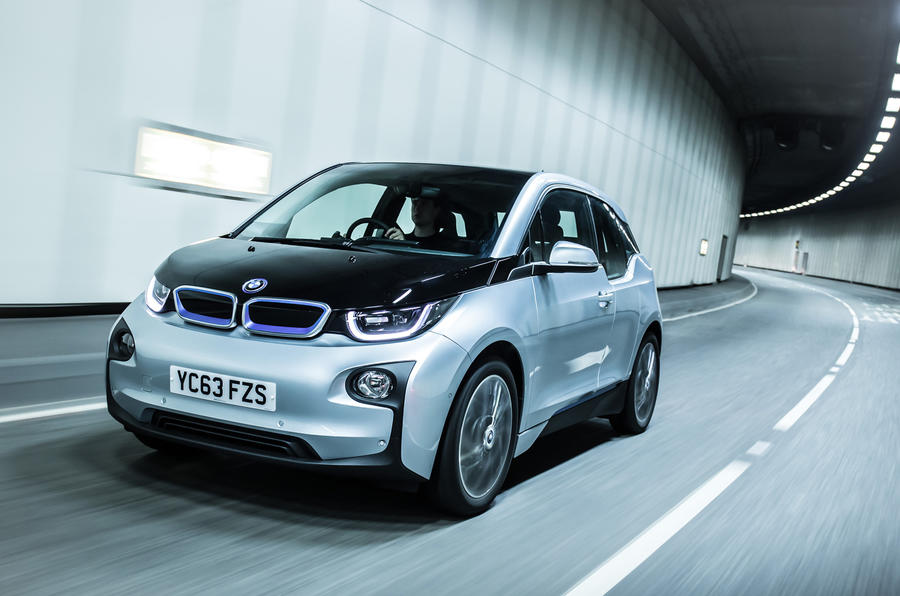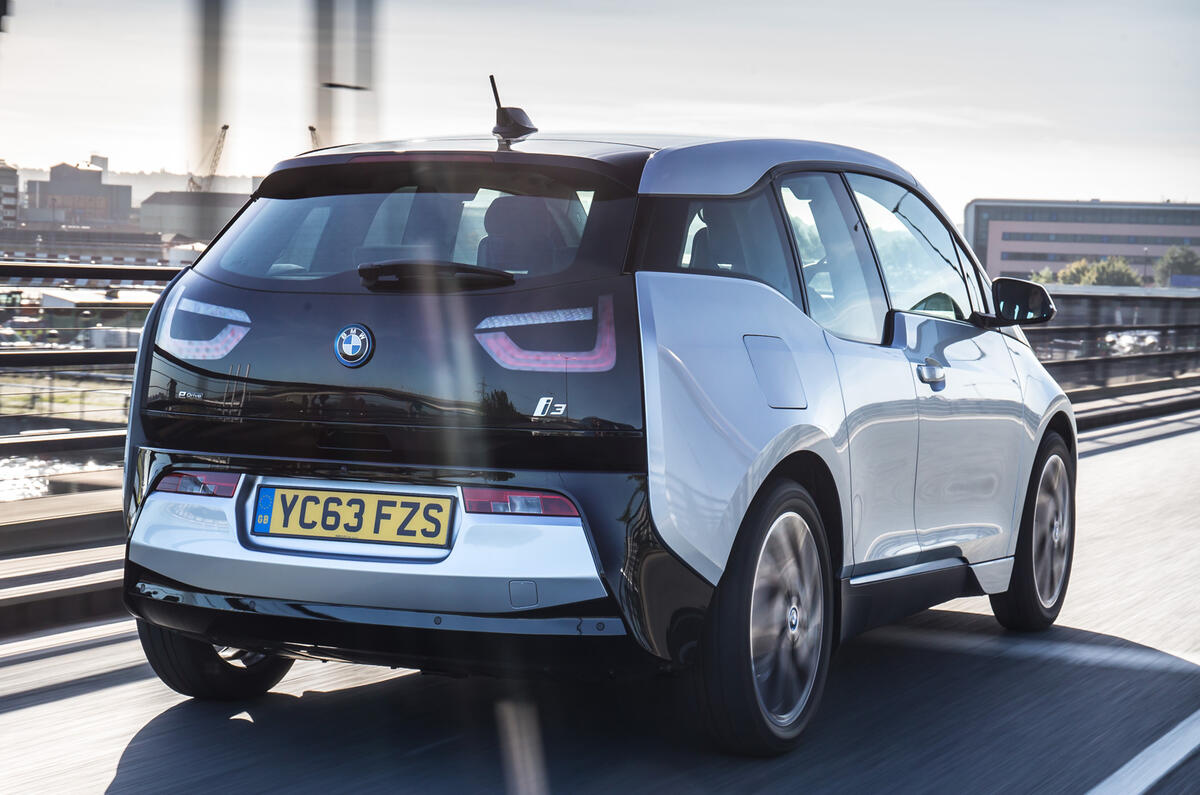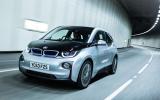What is it?
Nearly all car enthusiasts will, by now, be familiar with the radical BMW BMW i3. Announced as the ‘Mega City Vehicle’ just over three years ago, the electrically driven production version is finally on sale in the UK.
Based on a separate aluminium chassis, topped with a carbonfibre reinforced plastic bodyshell, the i3’s rear wheels are driven by a rear-mounted electric motor, good for a peak power output of 167bhp and 184lb ft of torque from standstill.
This model is the i3 Range Extender, which gets a two-cylinder petrol engine/generator to act as back up to the 18.8kWh lithium-ion battery. The two-cylinder, 647cc engine - adapted from a BMW scooter - is made in Korea to BMW’s specifications and develops 36bhp and 40lb ft of torque at around 4500rpm, which seems to be the speed that the engine is programmed to run at when it is called into use.
Described as being ‘sealed in a box’ under the rear boot floor (although it sits alongside the electric motor), the petrol engine (which already meets strict EU6 pollution regulations) cannot mechanically assist by driving the rear wheels. This is in contrast to the Chevrolet Volt, whose range-extender engine can actually ‘clutch on’ to the transmission.
The i3’s tiny engine/generator gets an equally tiny nine-litre fuel tank and what one BMW employee told me was a “real-world economy of between 40 and 50mpg” when driving the i3 purely on the engine alone. Officially, this car is rated at 470.8mpg.
On paper, there are downsides with the addition of the range-extender engine. Weight rises from the 1195kg of the pure EV i3 to 1315kg. This very slightly blunts performance, with this version of the i3 having its 0-62mph sprint time increased from 7.2sec to 7.9sec, while the crucial urban 0-37mph time is eased back from 3.7 to 3.9sec.
What's it like?
Despite being unlike any previous BMW production car, the i3 has plenty of this brand’s best characteristics. The i3 has beautifully weighted steering, a first rate drivetrain, sparkling open road performance and remarkably assured handling for a short, tall car.
The styling is either alarmingly modern, or just plain over-done, depending on your point of view; but I doubt few people will have a problem with the interior. The cabin is remarkably modern: the huge view forward, the undeniable effectiveness of the twin-screen dashboard and the journey-enhancing airiness for front seat passengers. Top marks, also, for the quality, detailing and logic of the switchgear.
In heavy traffic, the i3 has remarkable off-the-line pace and can be positioned with a directness that leaves most other traffic stumbling. The driver can exploit openings in the traffic flow with a speed of reaction than even the Nissan Leaf can't match; and the i3’s semi-high-rise driving position is also a particular advantage in town, as is the 9.8m turning circle - something beaten only by a London Black Cab.
It is also surprising how well the i3 copes with the cratered streets of London on this test drive, feeling taughtly sprung and yet not crashing across broken surfaces. BMW’s chassis teams now carry out testing in the UK and it is clearly paying off.
On quicker A-roads, the i3 has a very impressive pace under full acceleration. Long uphills are demolished in fine style, with a seamless stream of torque (thank the combination of an electric motor and a single-speed transmission). The i3 also has remarkable stability, as a series of driving exercises at Brands Hatch prove. Sharp lane changes and even a stretch of hilly circuit in the pouring rain fail to ruffle the i3, even though it has 155/70 tyres at the front and 175/70s at the rear.






















Join the debate
Add your comment
Ive Driven one
alexanderkemp wrote: There is
I mean that in terms of
alexanderkemp wrote: I mean
Rex cruising power?
Issues for me